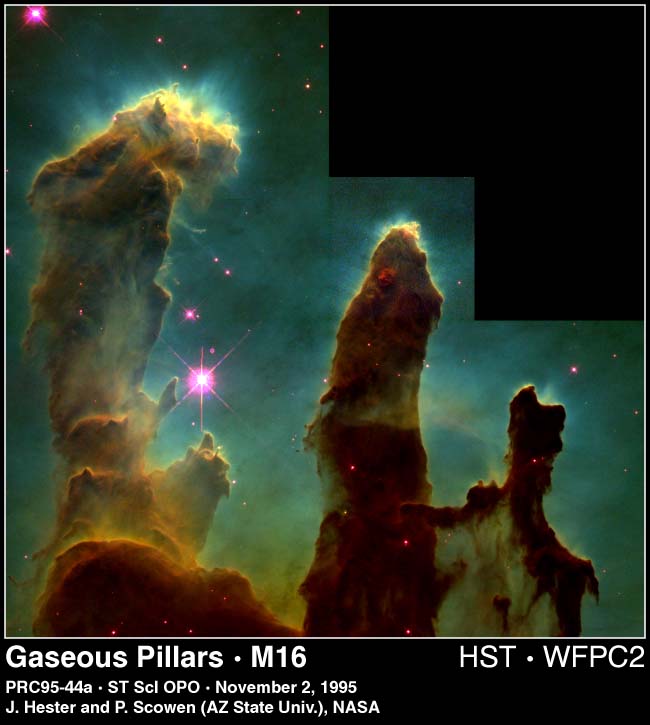Update! Closest star system found in the past century
- press release
- Luhman (2013) article
The Hertzsprung-Russell Diagram
- real data: Hipparcos unlabelled, labelled
- observer's version (i.e., axes in observational units)
- theoretical version (i.e., axes in underlying physical units)
Stars: More Physical Properties
- Mass: from binary systems
- visual binaries:
Mizar orbit
- spectroscopic binaries
- visual binaries:
Mizar orbit
- Mass-luminosity relation plotted for main sequence stars
- implications for HR diagram
HR diagram comparison: nearest vs brightest (highest flux) stars - implications for galaxies: spiral vs elliptical
Stellar Stability
- gasses and pressure
java applets: kinetic theory, gas law, piston, ideal atmosphere - hydrostatic equilibrium
- stability
solar response to flare
Stars in a Nutshell
- stellar structure
- star birth: Eagle nebula
starburst galaxy - stellar spectra: a digitial classification atlas
- the main sequence: nuclear reaction chains
Super-K and its image of the Sun, in neutrinos - H-R diagram animation--watch 'em evolve!
another animation - post-main sequence evolution
- low mass:
M dwarfs, L dwarfs and T dwarfs; an L dwarf discovery in IR - intermediate mass:
red giants
planetary nebulae: Cat's eye nebula, spirograph nebula
white dwarfs: cool!
implications: near-IR Milky Way K giants
elliptical galaxy NGC 2768 - high mass:
supergiants: Betelgeuse
supernovae: 1987A, 1999em, 2005cs
ejecta: N63A neutron stars and pulsars: Crab nebula
black holes: Cyg X-1
- low mass:
- nucleosynthesis:
the periodic table and
the circle, the circle of life
